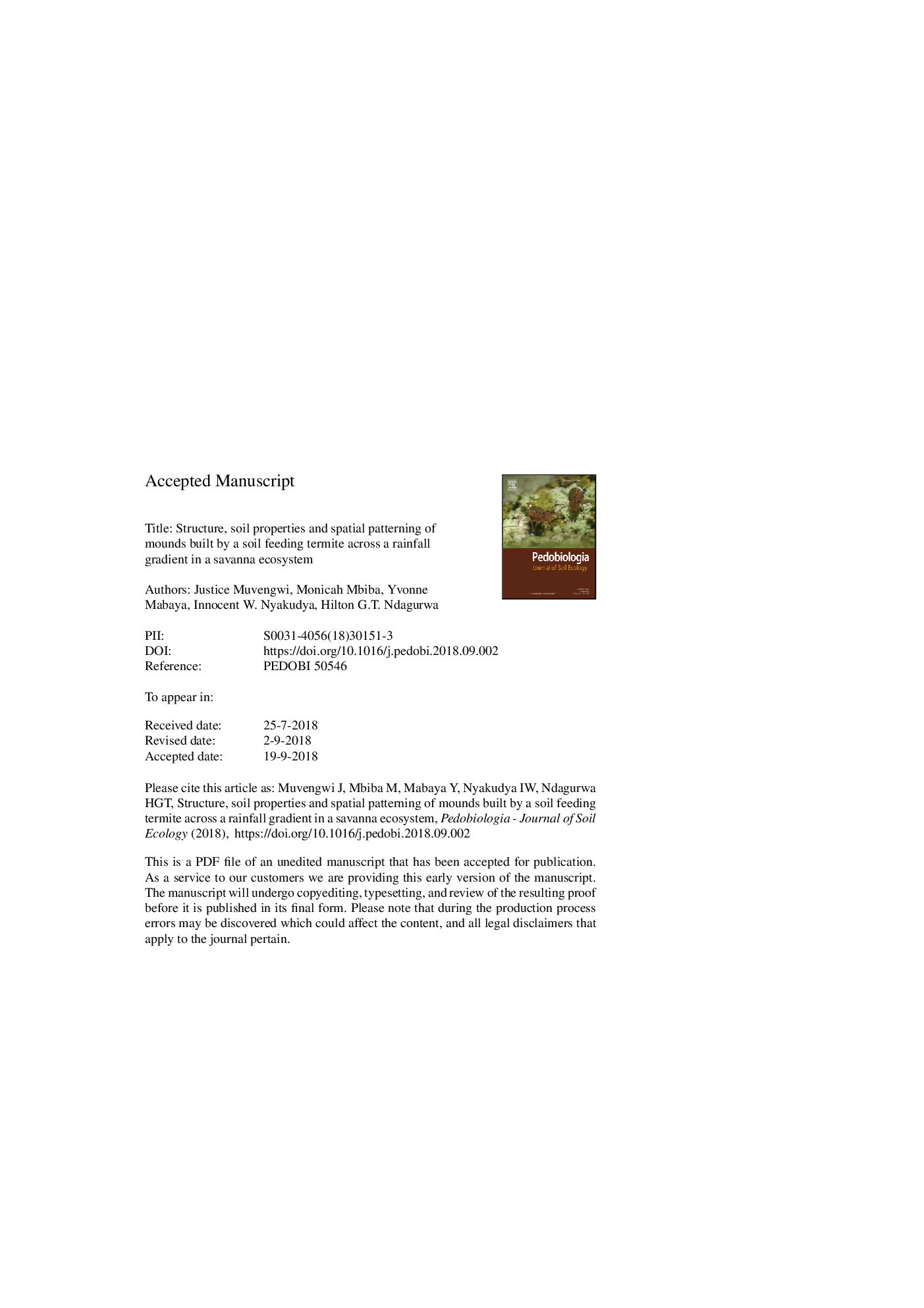| کد مقاله | کد نشریه | سال انتشار | مقاله انگلیسی | نسخه تمام متن |
|---|---|---|---|---|
| 11025981 | 1666455 | 2018 | 36 صفحه PDF | دانلود رایگان |
عنوان انگلیسی مقاله ISI
Structure, soil properties and spatial patterning of mounds built by a soil feeding termite across a rainfall gradient in a savanna ecosystem
ترجمه فارسی عنوان
ساختار، خواص خاک و الگوی فضایی کوههای ساخته شده توسط ترمینیت تغذیه خاک در یک گرادیان بارندگی در اکوسیستم ساوانا
دانلود مقاله + سفارش ترجمه
دانلود مقاله ISI انگلیسی
رایگان برای ایرانیان
موضوعات مرتبط
علوم زیستی و بیوفناوری
علوم کشاورزی و بیولوژیک
علوم دامی و جانورشناسی
چکیده انگلیسی
Although the ecosystem engineering role of termites has long been recognized, understanding the distribution and properties of their nests that affect ecosystem heterogeneity continues to be a priority. Studies have investigated soil properties like clay and organic matter (OM) composition of mounds belonging to fungus growing termites, however, little is known for southern African savanna soil feeding termites. Indeed, studies on the spatial distribution of termite mounds in savannas have been carried out with a focus mainly on the genus Macrotermes in savanna woodlands, leaving us with little information on other species that often occur on grasslands, for example soil feeding Cubitermes. Therefore, in this study we aimed to understand the effect of rainfall on Cubitermes breviceps mounds structure, soil properties and spatial point patterning at three sites. At each site two 25âmâÃâ25âm plots were marked for spatial analysis. Mound height and basal diameter were recorded. Two soil properties (clay and OM) from mound and savanna matrix soil were investigated. A decreasing trend in mound height and diameter was observed from the more arid to the wettest site. Mound height was positively influenced by the amount of both clay and OM. However, both clay and OM had a negative relationship with numerical density of mounds, and we suggest other factors such as grass cover and the prevailing conditions such as moisture and competition at early colony establishment also influence mound density. Cubitermes breviceps mounds were generally completely spatially random across sites, except for Ripley's L summary function that showed clustering, which we attribute to its cumulative nature. In conclusion, soil feeding C. breviceps incorporate more OM in their mounds and do not show competition between colonies probably due to them not feeding on limited food resources in the savanna such as grass and wood.
ناشر
Database: Elsevier - ScienceDirect (ساینس دایرکت)
Journal: Pedobiologia - Volume 71, November 2018, Pages 31-40
Journal: Pedobiologia - Volume 71, November 2018, Pages 31-40
نویسندگان
Justice Muvengwi, Monicah Mbiba, Yvonne Mabaya, Innocent W. Nyakudya, Hilton G.T. Ndagurwa,
